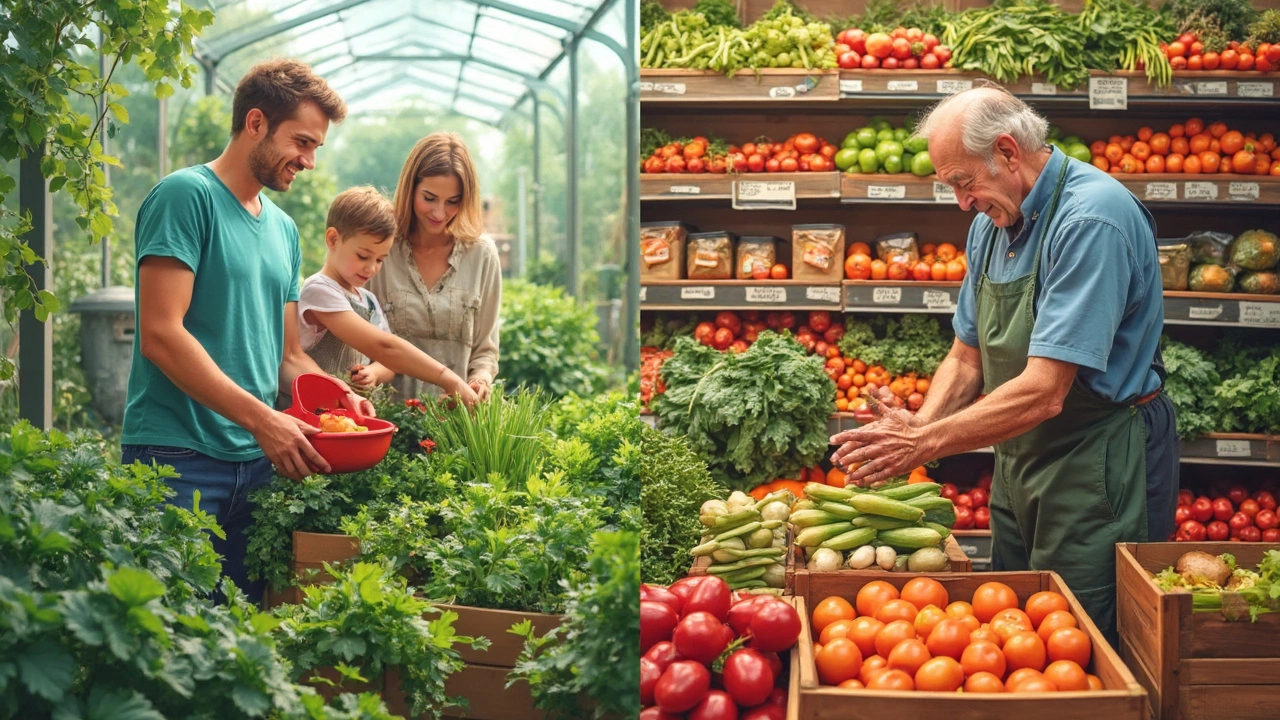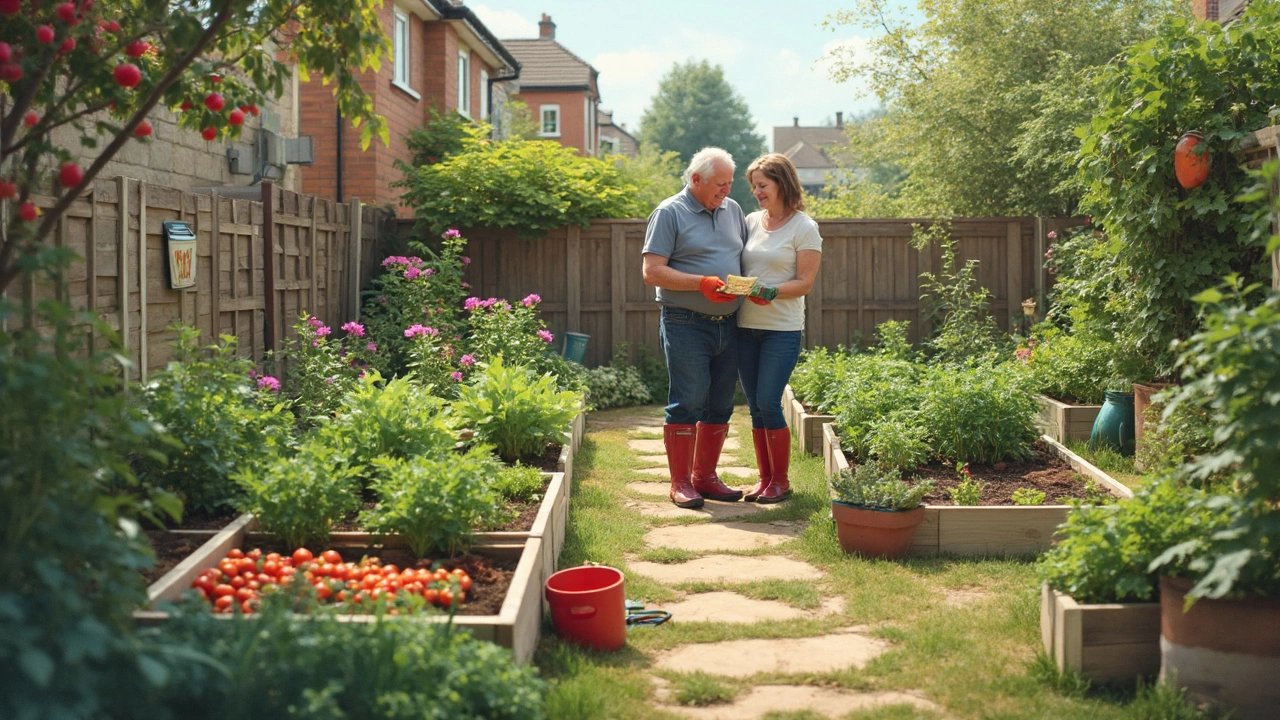Thinking you’ll save a pile of cash by growing your own veggies? It can totally happen, but the numbers don’t always line up the way you might think. Some crops are true budget heroes, while others suck up time and money without much payback. Before you run to the garden center with your wallet, it’s smart to know what actually goes into gardening costs.
The price tag on a packet of seeds looks cheap, but you need to add in soil, compost, tools, pots, water, and sometimes protective stuff like netting if you have hungry critters nearby. Plus, there’s your own time, which is worth more than most folks admit. Most people spend a lot more up front their first year—as in, enough that homegrown tomatoes start tasting like gold—but costs usually drop way down after you’ve got the basics.
Once you factor in all this, some veggies really shine when you grow them yourself, especially if you stick with the high-yield or pricey stuff like herbs, salad greens, and cherry tomatoes. Others—like potatoes, onions, and carrots—are so cheap at the store that it’s tough to come out ahead unless you’ve got special varieties or just love the taste of sun-ripened flavor.
- The True Costs of Homegrown Veggies
- What Vegetables Give the Best Bang for Your Buck?
- Hidden Savings Beyond the Price Tag
- Tips to Level Up Your Gardening Game
The True Costs of Homegrown Veggies
Sure, seeds are cheap—sometimes you can get a pack for less than two bucks. But growing your own vegetables is about way more than dropping seeds in dirt. To get things rolling, most folks need a few basics: a shovel, hand tools, maybe some gloves, and definitely some quality soil or compost. Buying bags of soil, especially for container gardens, can add up fast. For a 4x8 raised bed, you’re often looking at $50 or more just for soil if you buy from a big box store.
Then comes water. If you’re in an area with hot summers or limited rainfall, the water bill adds up—sometimes an extra $10–$20 per month during peak growing season, unless you’re catching rain or using drip lines to cut costs. Mulch helps, but most people still use a lot more water than expected.
Tools are usually a one-time buy, but the first year’s start-up can sneak into the $100–$200 zone fast, especially if you want things like raised beds, trellises, or fencing to keep out critters. After that, you mostly buy little things like seeds, fertilizer, or replacement tools if something breaks.
Time matters, too. On average, a beginner spends at least 2–3 hours a week on planting, weeding, watering, checking for bugs, and harvesting. If you enjoy it, great—just remember it’s not exactly “free food.”
Hidden costs show up, like fighting bugs and diseases, buying row covers or organic sprays. And sometimes, crops fail—bad weather, bad soil, or just rotten luck. Even seasoned gardeners lose battles to slugs or summer storms. Supermarkets don’t charge you for their crop failures, but your garden will.
- Grow vegetables like lettuce, kale, and herbs if you want higher savings, since these can be pricey and go bad fast when store-bought.
- Go easy on potatoes, carrots, and onions unless you’re in it for the hobby—they’re cheap year-round in most supermarkets, often less than $1 per pound.
- Factor in season: groceries cost more in the off-season, but your home garden keeps rolling if you plan right.
Bottom line, the first year is all about investment. The real savings stack up after you’ve bought the must-haves, start saving your own seeds, and learn what grows best in your yard. That’s when you finally start seeing real value from your homegrown food.
What Vegetables Give the Best Bang for Your Buck?
If you want the most for your money, not all veggies are created equal. The big winners are crops that cost a lot at the store but are super easy to grow at home. Think herbs, salad greens, and cherry tomatoes—these can cost you a couple of bucks for a tiny bag at the market, but you can get a steady supply from one or two plants in your garden. That's the kind of payback people look for with grow vegetables projects.
Some growers break it down by how much you can harvest per square foot, and how those numbers stack up against store prices. Check out this table to see some average data (using 2024 numbers from home gardeners and USDA market reports):
| Vegetable | Yield per Plant (lbs) | Avg. Store Price/lb (USD) | Cost to Grow (USD) | Typical Savings |
|---|---|---|---|---|
| Salad Greens (lettuce, spinach) | 2.0 | $5.00 | $0.50 | High |
| Basil (herb) | 0.5 | $18.00 | $0.30 | Very High |
| Cherry Tomatoes | 6.0 | $6.00 | $1.00 | High |
| Bell Peppers | 4.0 | $3.50 | $1.50 | Good |
| Zucchini | 8.0 | $2.00 | $1.00 | Good |
| Carrots | 1.5 | $1.60 | $0.70 | Low |
Basil is the rock star here. Grocery stores charge through the nose for a small bunch, but a single plant can keep you in pesto all summer for just pennies. Lettuce and salad mixes are next—they grow fast, don’t need much space, and constantly give you new leaves to pick.
Tomatoes, especially cherry varieties, are another favorite. Homegrown ones taste way better than the watery kind from big chains, and you can easily fill basket after basket once the plants get going. Bell peppers and zucchinis have good returns too, especially if you don’t have to spend money fighting off bugs and diseases.
- Grow herbs and leafy greens in pots if you’re tight on space—no excuses, just sunlight and water.
- If you’re on a budget, skip the potatoes and carrots; they’re cheap in bulk at grocery stores and take up a lot of garden real estate.
- Save seeds from store-bought peppers and tomatoes for next season to save even more.
- Pick crops that give repeat harvests—like lettuce, spinach, and kale—so you get more bang for your buck all season long.
Choose wisely, and your garden can actually save you cash instead of just looking pretty.

Hidden Savings Beyond the Price Tag
There's more to growing vegetables than what you pay upfront. Most folks know about the seed and tool costs, but the hidden perks can add up fast—and sometimes, they're worth more than cash savings.
The first winner is freshness. Homegrown veggies picked right before dinner have a lot more nutrients left than ones that crossed half the country in a truck. The USDA shows that spinach can lose half its vitamin C within 24 hours after harvest. That’s nutrition and flavor stores can’t match.
Food waste drops big time, too. Gardeners tend to pick only what they’ll use, while bags of salad greens from the store often go slimy in the fridge. One study from NRDC found the average family tosses out about $1,500 worth of food yearly—so even a small reduction here pays off over the months.
There’s also peace of mind about what's on your plate. Folks who grow at home control the soil, fertilizers, and don’t have to worry about pesticide residue as much. The Environmental Working Group puts out a “Dirty Dozen” list every year, showing that store-bought strawberries, spinach, and kale are often loaded with pesticides. Growing your own, especially these crops, lets you skip a lot of that worry.
Then there are the physical and mental bonuses. Gardening burns calories, lowers stress, and can boost your mood more than you’d think. The CDC points out that just 30 minutes of gardening burns about 150 calories for an average adult. Not bad for a daily chore.
"Growing your own food is like printing your own money," says Ron Finley, known as the "Gangsta Gardener" in Los Angeles. “You get health, savings, and freedom. That’s hard to beat."
Check out how home gardening stacks up in real life:
| Hidden Saving | Average Value Per Year (US) |
|---|---|
| Reduced Food Waste | $150–$300 |
| Physical Activity (gym equivalent) | $200–$400 |
| Organic Produce Premiums Skipped | $250–$500 |
| Health Benefits (lower doctor/medicine costs) | $100 or more |
If you add it all together—freshness, health, waste cuts, and sanity—growing at home pays out in ways grocery receipts just don’t show.
Tips to Level Up Your Gardening Game
Ready to get the most out of your garden? Even if you’re working with a tiny space or a shoestring budget, a few smart moves can make your homegrown veggies way more productive and budget-friendly.
The first rule: pick the right crops. Stick with plants that give you a lot for what you put in—spinach, salad greens, basil, and cherry tomatoes are popular because they grow fast, don’t need a ton of space, and cost a premium at the store. Mel Bartholomew, creator of Square Foot Gardening, once said,
“There is nothing more satisfying, or more delicious, than picking your own vegetables. The garden is your own fresh produce department—just steps away.”
Next up, work smarter with your soil. Compost is your best friend. Homemade is even better, plus it’s basically free. Just toss kitchen scraps and yard waste in a pile or bin, and let nature do its thing. Healthy soil means less need for expensive fertilizers and fewer pest problems.
- Use raised beds or containers if you’re short on ground space. They drain well and usually mean less weeding.
- Start with seedlings for picky plants (like tomatoes) instead of seeds—saves time and boosts your odds if your climate has a short growing season.
- Plant herbs around the edges—they grow fast, and you’ll save loads compared to those tiny store bundles.
- Mulch like your wallet depends on it. A thick layer of straw or leaves keeps weeds down and moisture in, so you use less water and spend less time sweating over your patch.
Don’t forget timing. Sow a little bit each week instead of all at once (that’s called succession planting). You’ll keep the harvest going and avoid waste.
And finally, track what works. Keep a notebook (or just use your phone) to jot down what you planted, where, and when things thrived or flopped. A year or two of notes will save money—and headaches—since you’ll avoid the classic gardening traps.
If you plan right, pick smart crops, and look after your soil, you’ll find it is cheaper to grow vegetables—especially if you value freshness and flavor. Plus, you can skip those double-digit price tags on organic greens at the market.
